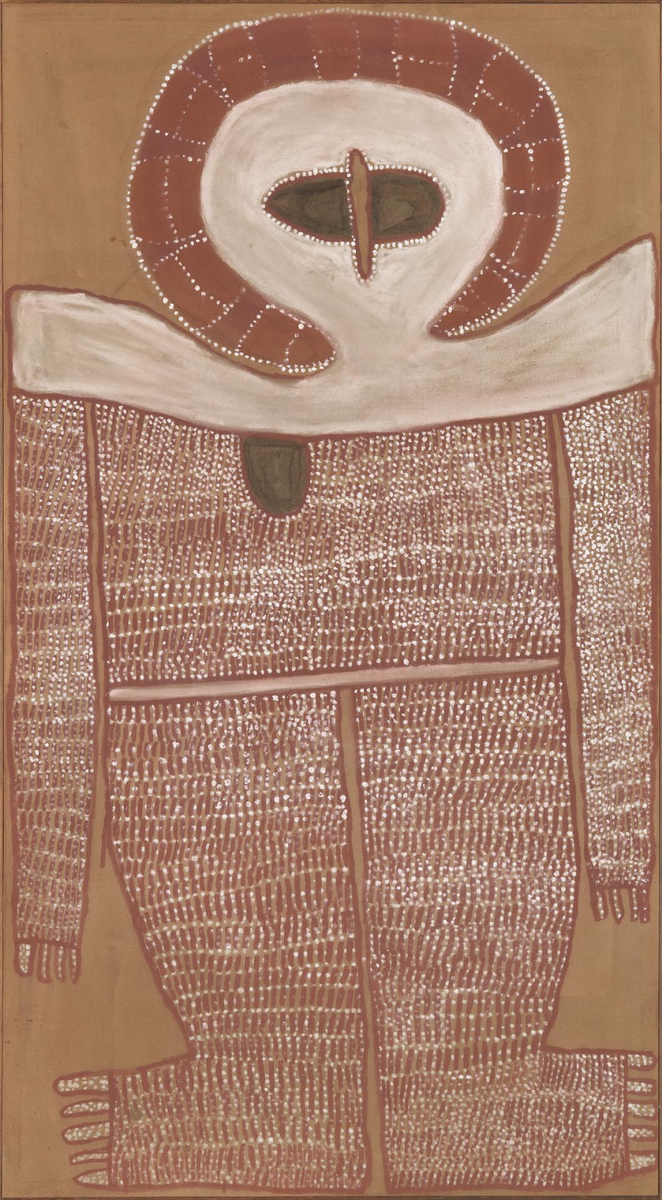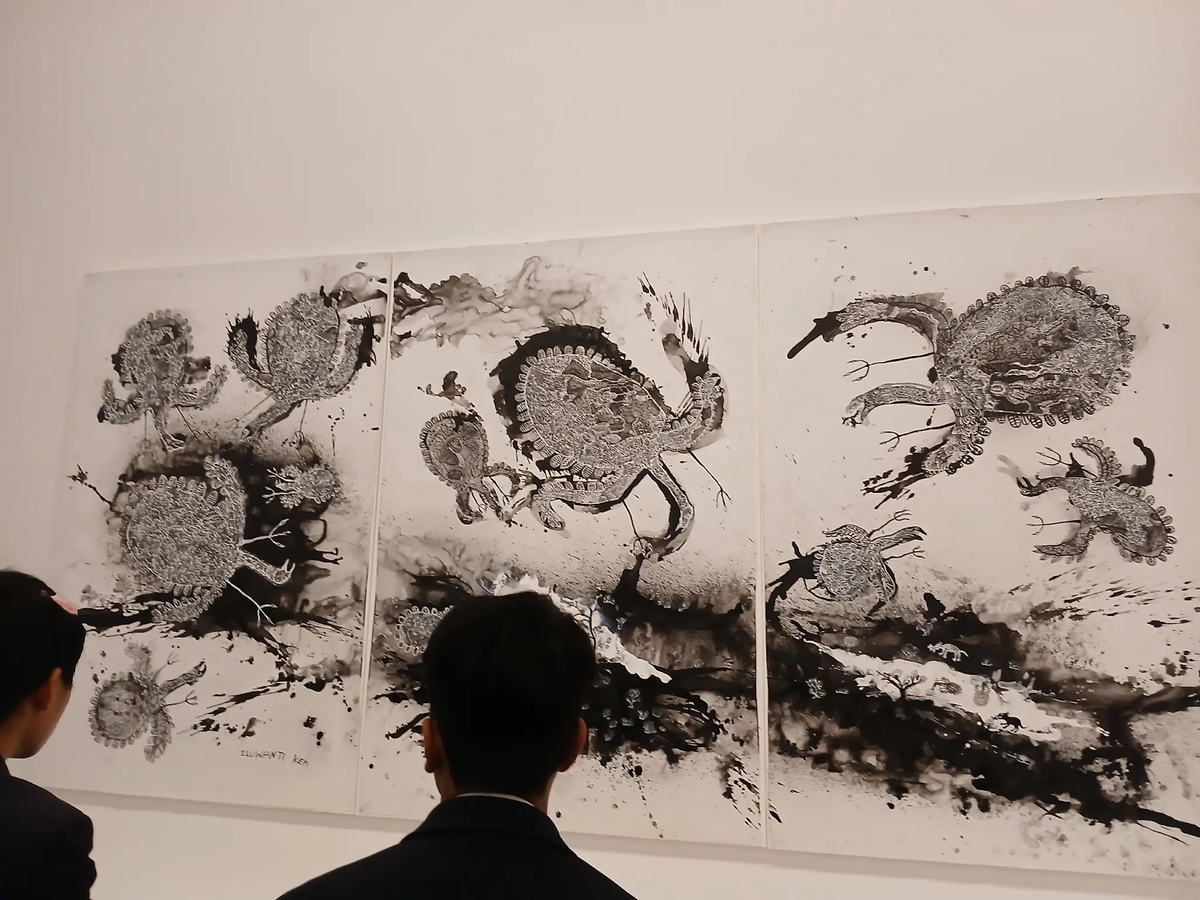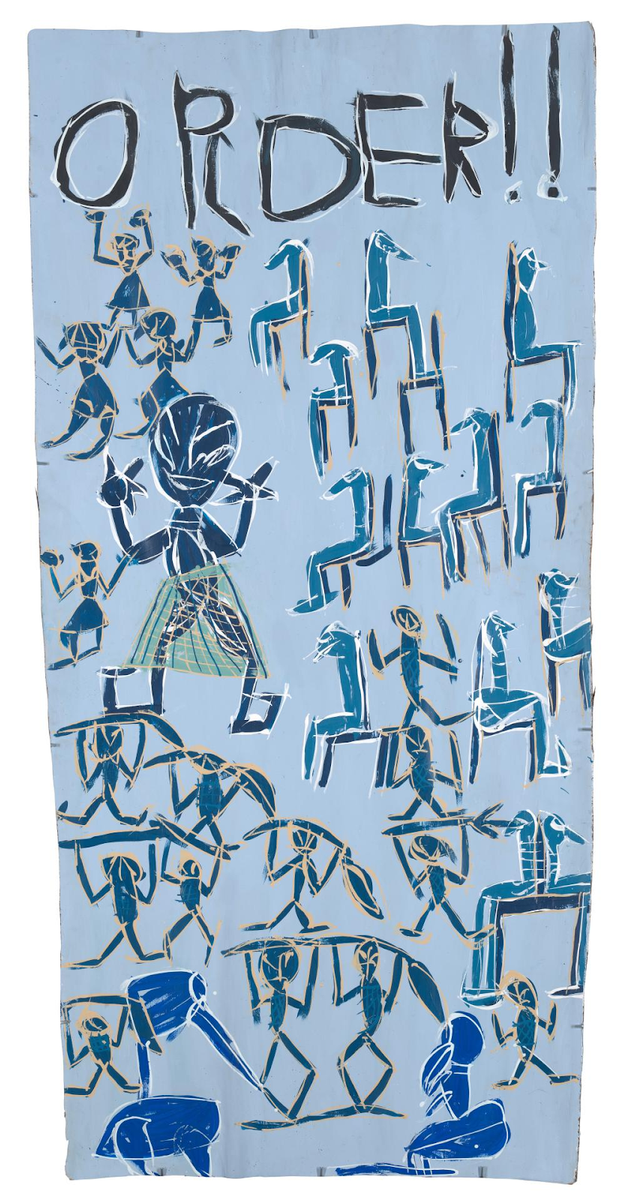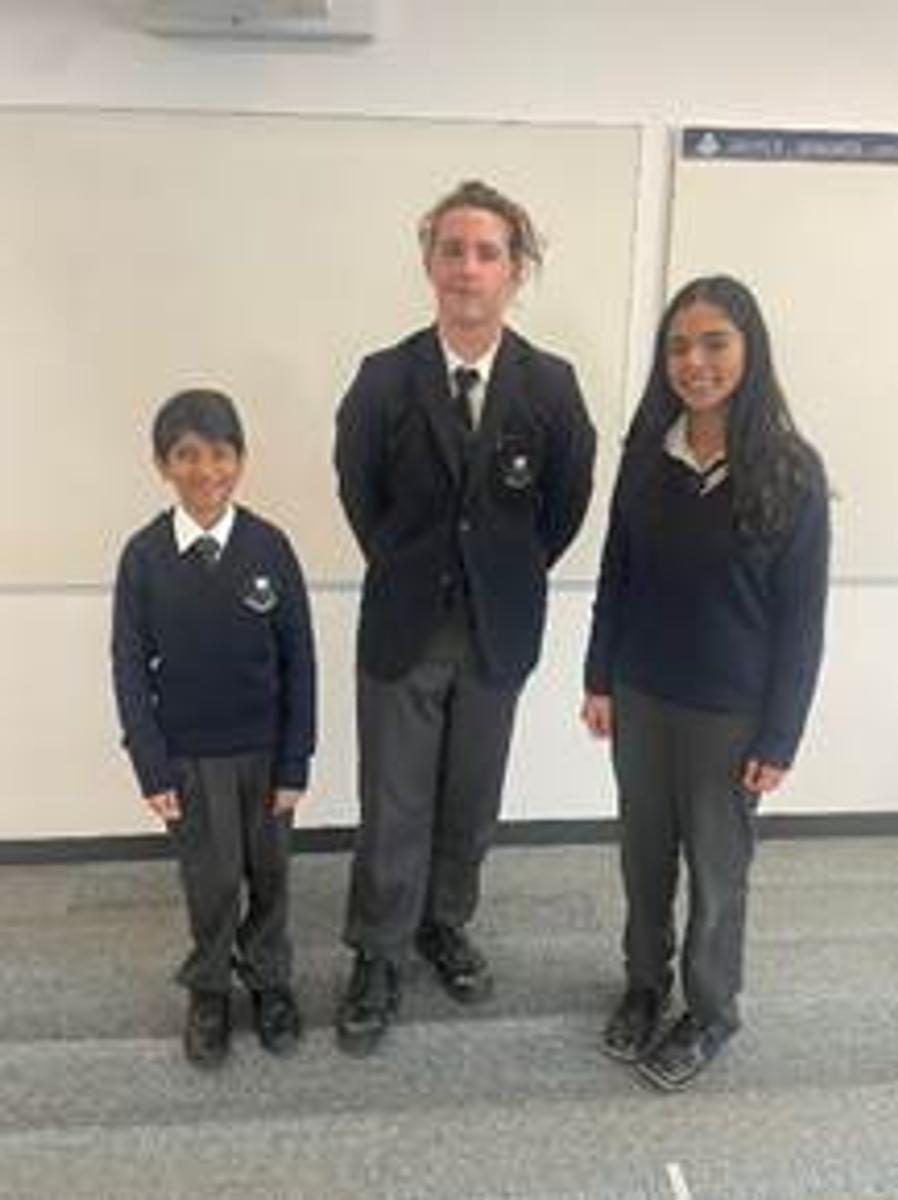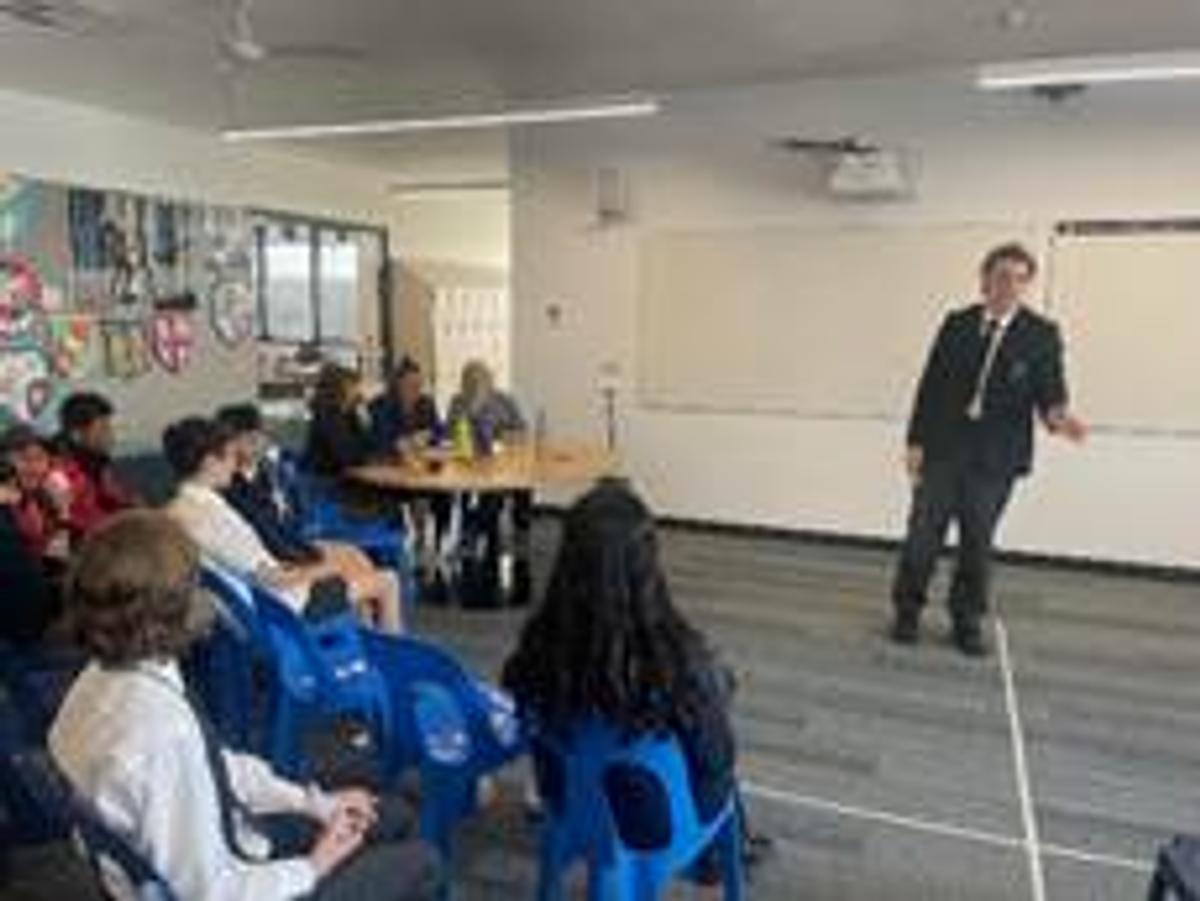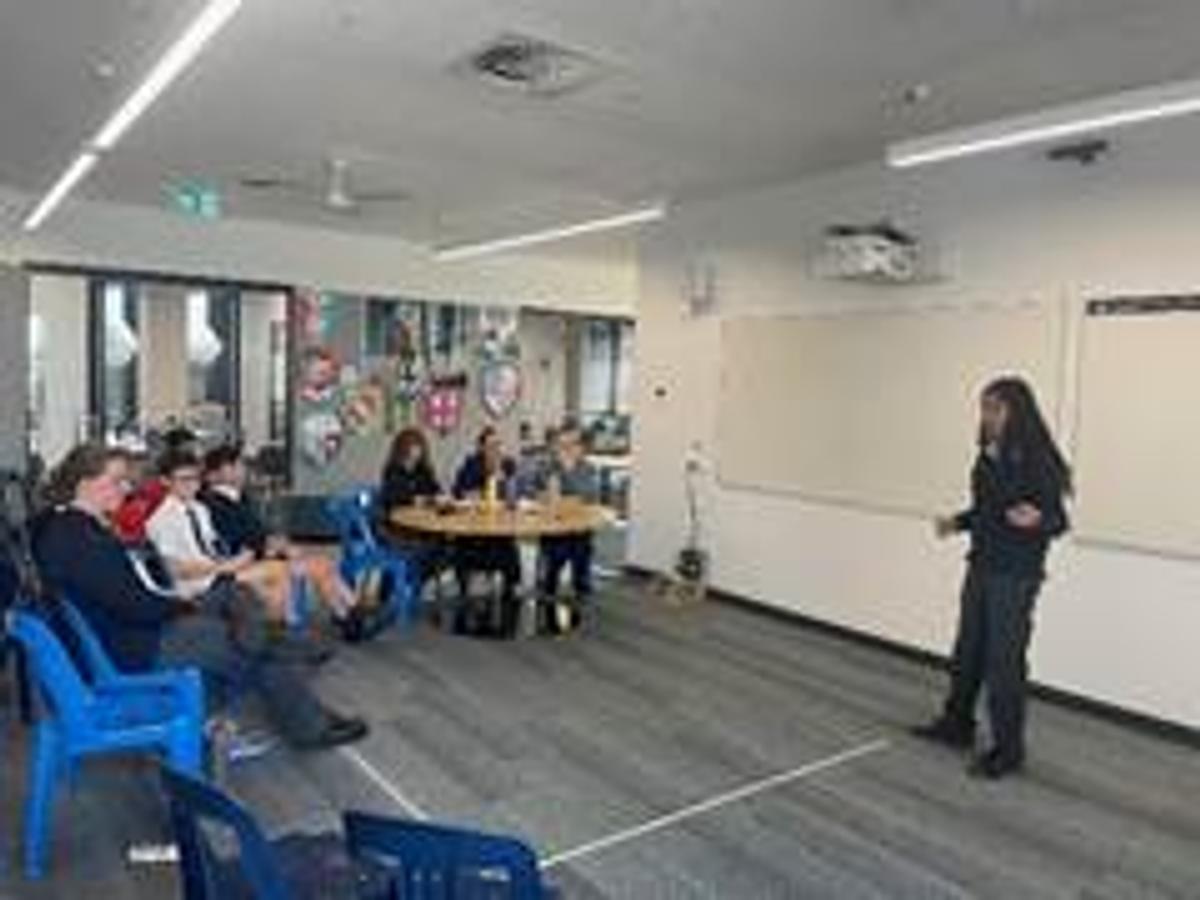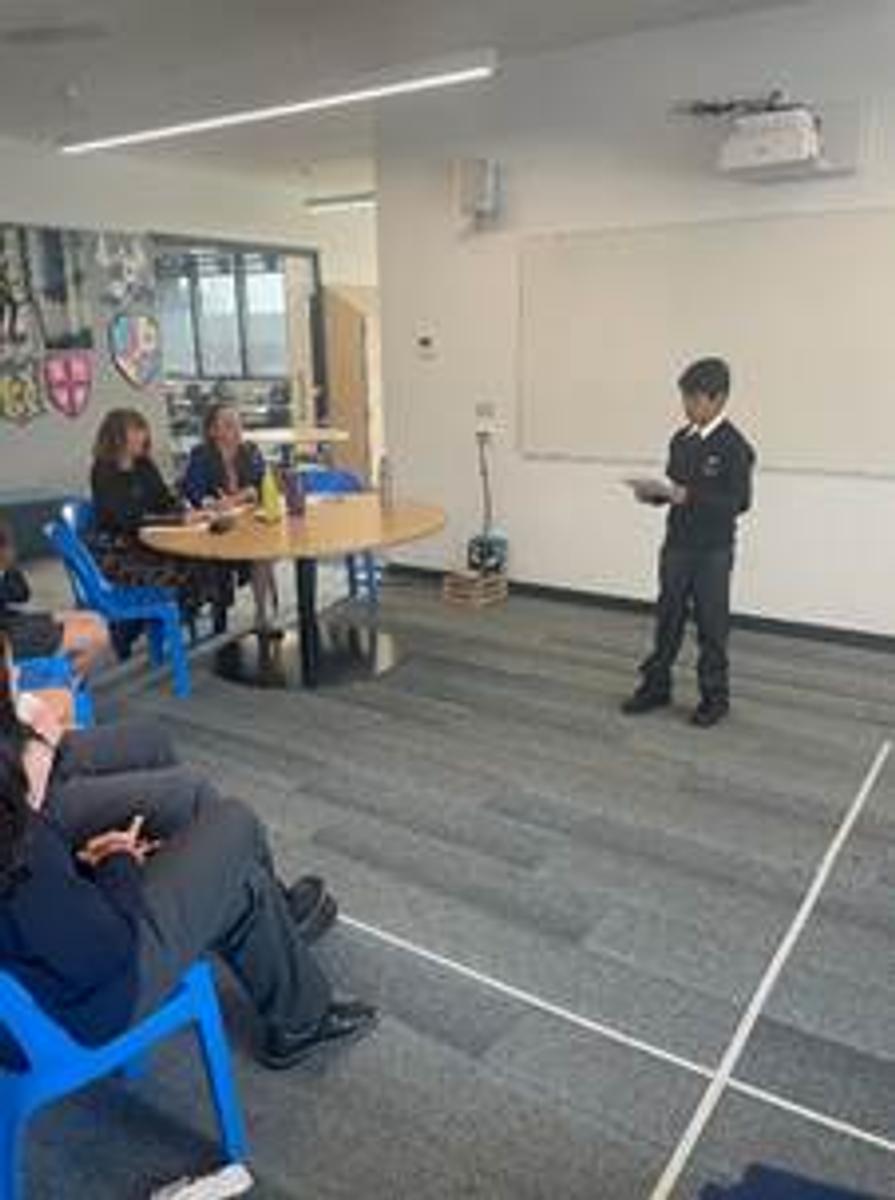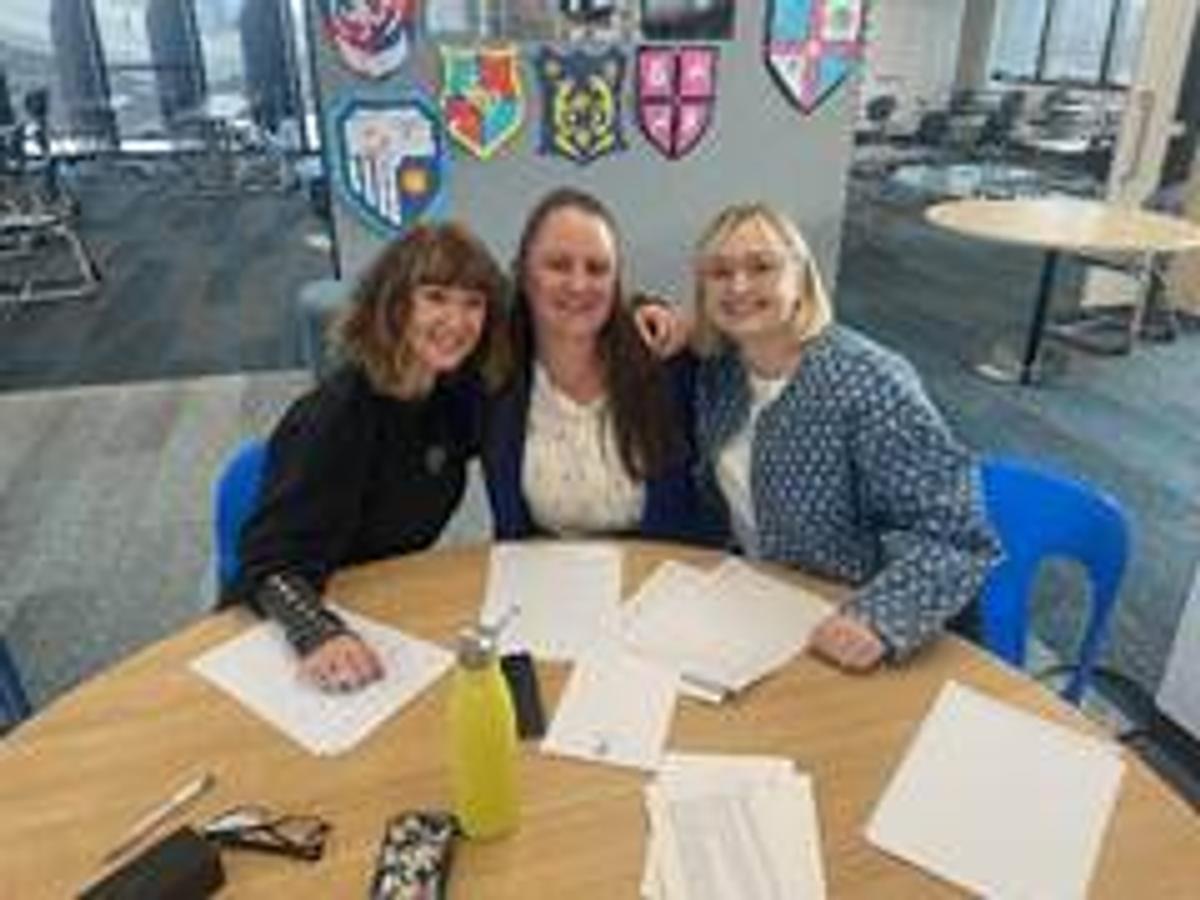ENGLISH
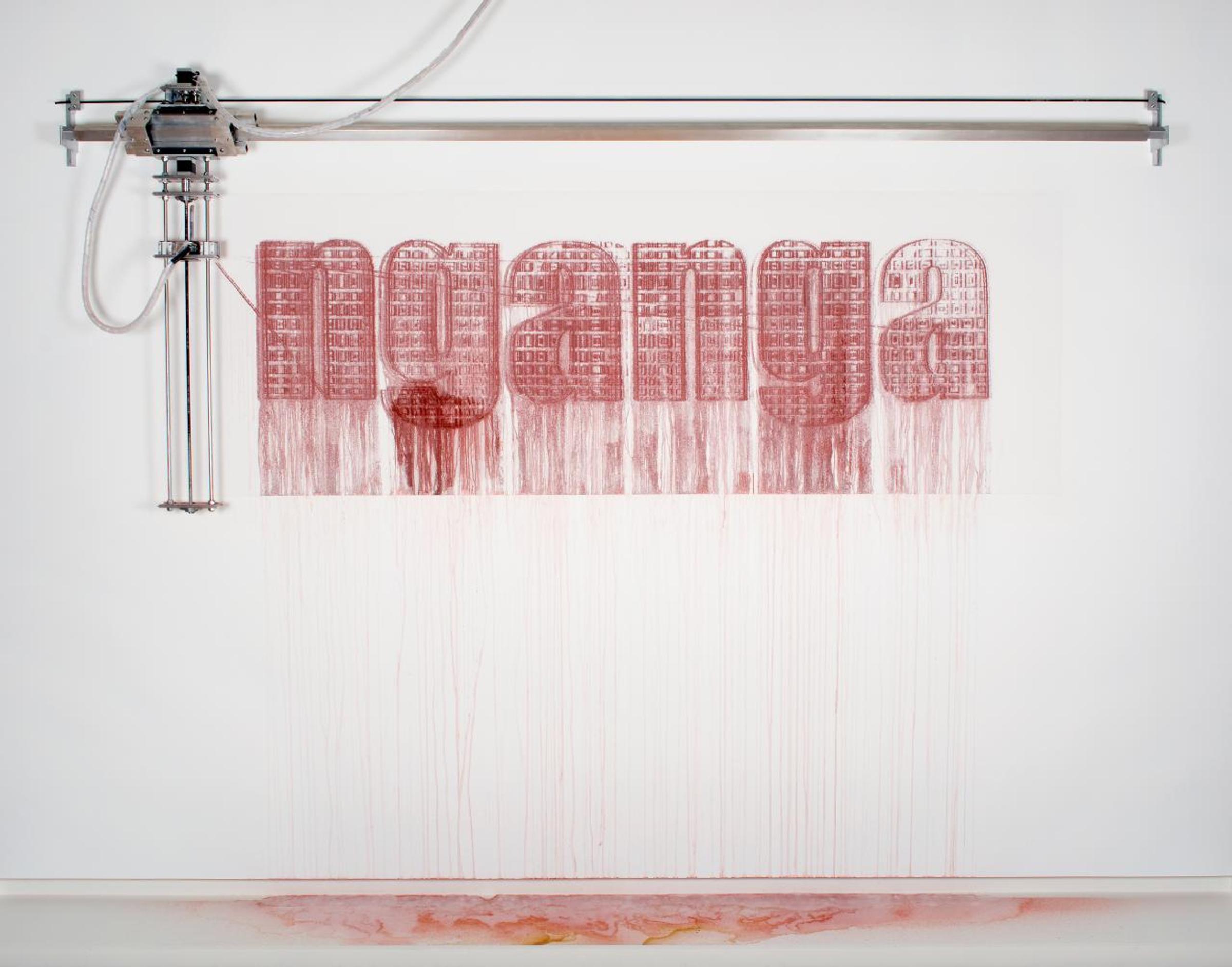
NGV AUSTRALIA EXCURSION
VOICES OF COUNTRY | VCE LITERATURE
The NGV now offers a comprehensive guided tour directly related to VCE Literature and the Voices of Country unit. Students study various texts by First Nations writers and are developing skills in understanding Indigenous perspectives and voices of Country.
All VCE Literature students visited the gallery for this tour during National Reconciliation Week, below are some of their thoughtful reflections on the artwork they encountered.
Senior Literature Team
Mr Shane Papatolicas, Dr Natalie Day and Dr David Dick
Alec Mingelmanganu, ‘Wanjina’
This painting depicts Wanjina, a powerful spirit. The artist emphasises its presence by utilising negative space to let the spirit fill the canvas. This painting was created on bark but there are so many other depictions of Wanjina that come from different communities across Australia. Each depiction is different but through decades of verbal communication, Wanjirna’s powerful presence and all-mighty stature has not been lost, each painting and sculpture changes its colour and features but it stays rotund and powerful.
Eden Sullivan, Year 10
Robert Andrew, ‘Moving out of Muteness’
During our excursion to the NGV, one of the most fascinating pieces we looked at was ‘Moving out of Muteness’ by Robert Andrew. It was explained to us that the work begins as a blank canvas of white and everyday a water is used to wash off the white chalk unveiling the word ‘Nganga’ in deep red ochre, which translates to ‘language’. The act of the word being covered in the first place is symbolic of how Indigenous culture and language was suppressed and buried during colonisation. The word, even after being exposed, continues to wash away to represent how overtime First Nations languages have eroded and many cultures had been completely eradicated as a consequence of colonisation.
Amber Knox, Year 10
Iluwanti Ken, ‘Walawuru ngunytju kukaku ananyi (Mother eagles going hunting)’
This painting speaks of mothers and children to me. It portrays the grace and strength of motherhood alongside fighting, violence, and protectiveness. Perhaps it also alludes to the Stolen Generation where mothers did all they could to protect their children. The black pouring of chaotic paint is the land, sea, and sky, all connected, which could also represent the circular way of life. Everything is connected and everything works in a similar way: mothers teaching their children how to hunt prey, and the prey does the same thing for their children - teaching them how to hunt for the food they eat. There is death and destruction, but this aids the creation and cycle of life; the interconnectedness of everything, a celebration of Country.
Riya Shankar, Year 10
Yolŋu artist Dhambit Munuŋgurr, Bark Salon: ‘Order’
Dhambit Munuŋgurr is an Aboriginal artist who partakes in bark painting. She was in a disastrous car accident which severed her strength from the wrist upwards. She could no longer grind the ochre necessary to produce natural paint, and asked the elders permission to use acrylic paint. This request was granted, and Munuŋgurr is now recognised for her vibrant blue bark paintings.
'Order’ depicts Julia Gillard dressed in traditional Indigenous apparel, with Aboriginal women coming to her defence and rising against the men in parliament, seen as sulking on their chairs. This painting came after Gillard’s Misogyny Speech, and depicts the unity between First Nations women and non-Indigenous Australian women against the common haul of workplace misogyny. Equity does not seem so far when all it takes to achieve it is a voice which will be heard.
Unfortunately, more often than not, the voice which rings the furthest will not be that of an Indigenous woman’s. However, if that voice carries a universal message, it is one that may ultimately bring Indigenous issues to light, so that one day their voices may also ring loud and far.
Gwendolyn Thiere, Year 11
RECONCILIATION WEEK PUBLIC SPEAKING COMPETITION
To celebrate Reconciliation Week the English faculty ran a public speaking competition at the East Campus. With the topic: “From Words to Action: why reconciliation matters for all Australians", students were asked to create a speech of two to three minutes long. We were blown away by the insight and enthusiasm of all students. Through perfectly crafted presentations students explored not only atrocities of the past but the need to come together in the future.
I’d like to say a big thank you to all students who participated in the competition including, Bhumika Kapur (Year 9), Patrick Rule (Year 9) and Madhav Mohan (Year 8). They’ve all earned house points and some chocolate for their participation.
Whilst we were impressed by every speaker, ultimately Patrick won the competition. Congratulations Patrick!
And a big thank you to our wonderful English staff who got involved in the competition. Thank you to Ms Condell and Ms Pentland who helped to edit the speeches of the participants, giving helpful tips. And thank you to the adjudicators, Ms Barber, Ms Dickson and Ms Barton who gave such specific and positive feedback to all participants.
Charlotte Douglas
English Leader East Campus

